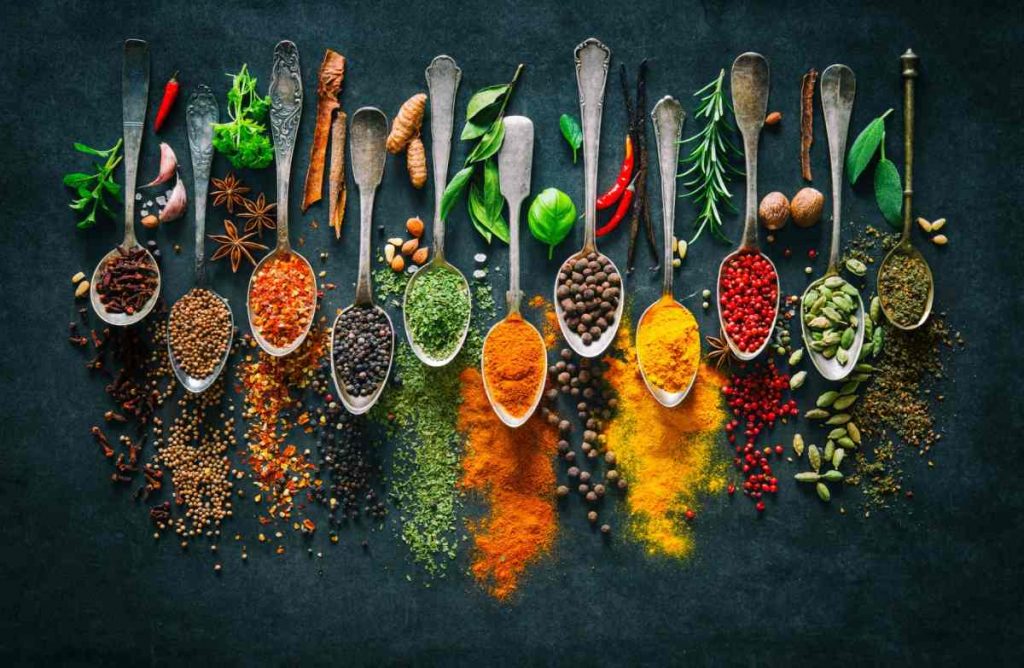Spices: Another night of grilled chicken breasts is healthy, but it’s also a little monotonous. It’s beneficial for your taste buds and your health to spice up a simple but healthy dinner. When you reach for your spice rack, you’ll not only improve the flavor of your food, but you’ll also get an antioxidant boost (substances that protect cells from damage).
There’s no need to go on a vast search for exotic ingredients; some of the best spices may be found just in your neighborhood. Vizthum recommends which herbs to include in your meals in this article.
One thing to keep in mind: most studies that show benefits employ supplements to regulate the amount of spice (or the active component in the sauce) that participants take. Often, these deliver larger dosages than you’d get in a day’s worth of food.
Table of Contents
Cinnamon Bark
Cinnamon bark is the source of this iconic spice used in everything from pumpkin spice lattes to Cincinnati chili. It gives meals a sweet taste without adding sugar, and studies show it can help people with type 2 diabetes lower their blood sugar levels.
Cinnamon may also have heart-healthy properties, such as lowering cholesterol and triglyceride levels in the blood. This is particularly critical for people with diabetes, who are more likely to develop heart disease.
Cinnamon isn’t a substitute for diabetes medicine or a low-carbohydrate diet, but it can be a beneficial supplement to a healthy lifestyle.
Try sprinkling it on yogurt, fruit, or hot cereal or using it in stews and chilis as a meat rub.
Turmeric
Turmeric is best known for its use in Indian curry foods. Still, it’s also become a hot superfood because of its ability to reduce inflammation, a significant source of pain and illness.
What do you think is the most impressive? Turmeric contains a chemical called curcumin, which is one of its components. It appears to reduce inflammation in the brain, which has been linked to Alzheimer’s disease and depression, according to research. A tiny study of persons over 50 found that those who took curcumin pills for 18 months improved their memory test results. They also stated that they were in a better mood. Their brain scans revealed much fewer indicators linked to cognitive deterioration.
Curcumin’s anti-inflammatory properties make it helpful in lowering pain and swelling in people with arthritis. Curcumin has also been shown in animal experiments to have potent anti-cancer activities. According to a Johns Hopkins study, combining curcumin with a chemotherapy medication was more efficient than chemotherapy alone in reducing drug-resistant cancers.
Want to incorporate this superfood spice into your diet? Rub it on roasted vegetables and meats, add it to tacos, or make a curry out of it.
Also Read: HOW DO YOU GET RID OF SADDLEBAGS ON ARMS?
Ginger
Ginger is a tropical plant that has been used to alleviate stomach upset, diarrhea, and nausea in Asian civilizations for thousands of years. It’s available in various convenient formats in the United States, including lollipops, sweets, capsules, and teas. You can also buy the dried powder at the grocery store’s spice section or buy it fresh to use in teas or grate into dishes.
According to research, Ginger has helped ease pregnancy-related nausea and minimize tummy distress after surgery. When used with anti-nausea drugs, it may even aid with chemotherapy-induced nausea and vomiting. (Ask your doctor before ingesting Ginger if you’re on chemotherapy treatments, as it can interact negatively with sure of them.) In several trials, Ginger has also been shown to reduce the intensity of motion sickness or perhaps prevent it altogether.
Meal tip: Incorporate this zingy spice into your diet by adding it to stir-fries, smoothies, or tea. It’s also delicious in salad dressings and baked dishes.
Garlic
Garlic, the pungent-smelling bulb widely used in cooking, is familiar to most of us. However, you may not be aware that garlic consumption can protect your heart from changes leading to heart disease.
It’s natural for your arteries to harden as you get older. This is known as atherosclerosis, and it occurs when fatty deposits of cholesterol and other chemicals from inside your arterial walls. Smoking, high blood pressure, and excessive cholesterol can exacerbate the problem. The arteries narrow as the plaque builds up over time. This puts you at risk for heart attacks and strokes.
Garlic consumption has been associates with blood vessel flexibility, particularly in women. Furthermore, research shows that garlic consumption lowers cholesterol and triglycerides.
Garlic is a crucial component of the Mediterranean diet, which cardiac experts frequently recommend. It’s versatile and can be utilizing in a variety of savory meals.
Meal tip: To flavor veggies, mix fresh or powdered garlic with olive oil and pepper, or combine it with rosemary to make an excellent meat rub. You may also use it to season soups and salad dressings.
Cayenne is a Chili Pepper
Cayenne a chili pepper used in Southwestern American cuisine and Mexican, Creole, and Cajun cuisine. Capsaicin a compound found in cayenne peppers. It’s what gives them their spiciness and can also help with pain relief.
Capsaicin inhibits the transmission of pain impulses to the brain. What’s the result? You don’t feel as bad as you used to. It helps with arthritis pain and diabetes-related nerve damage. Capsaicin creams can be applly directly to joints and muscles.
According to lab research and animal studies, Cayenne pepper can also help with ulcers, which cause a lot of inside agonies. Although spicy meals are generally associat with stomach upset, capsaicin can help prevent ulcers by inhibiting the growth of an ulcer-causing bacteria (Helicobacter pylori or H. pylori), lowering stomach acids, is improve bloods flow.
Use this space to add heat to your food if you want it to be a little spicier. Chili, soups, stews, and meat all benefit from it. Add a dab to hot chocolate for a delightful twist.
Also Read: SUGGESTIONS FOR IMPROVING YOUR HANG CLEAN
